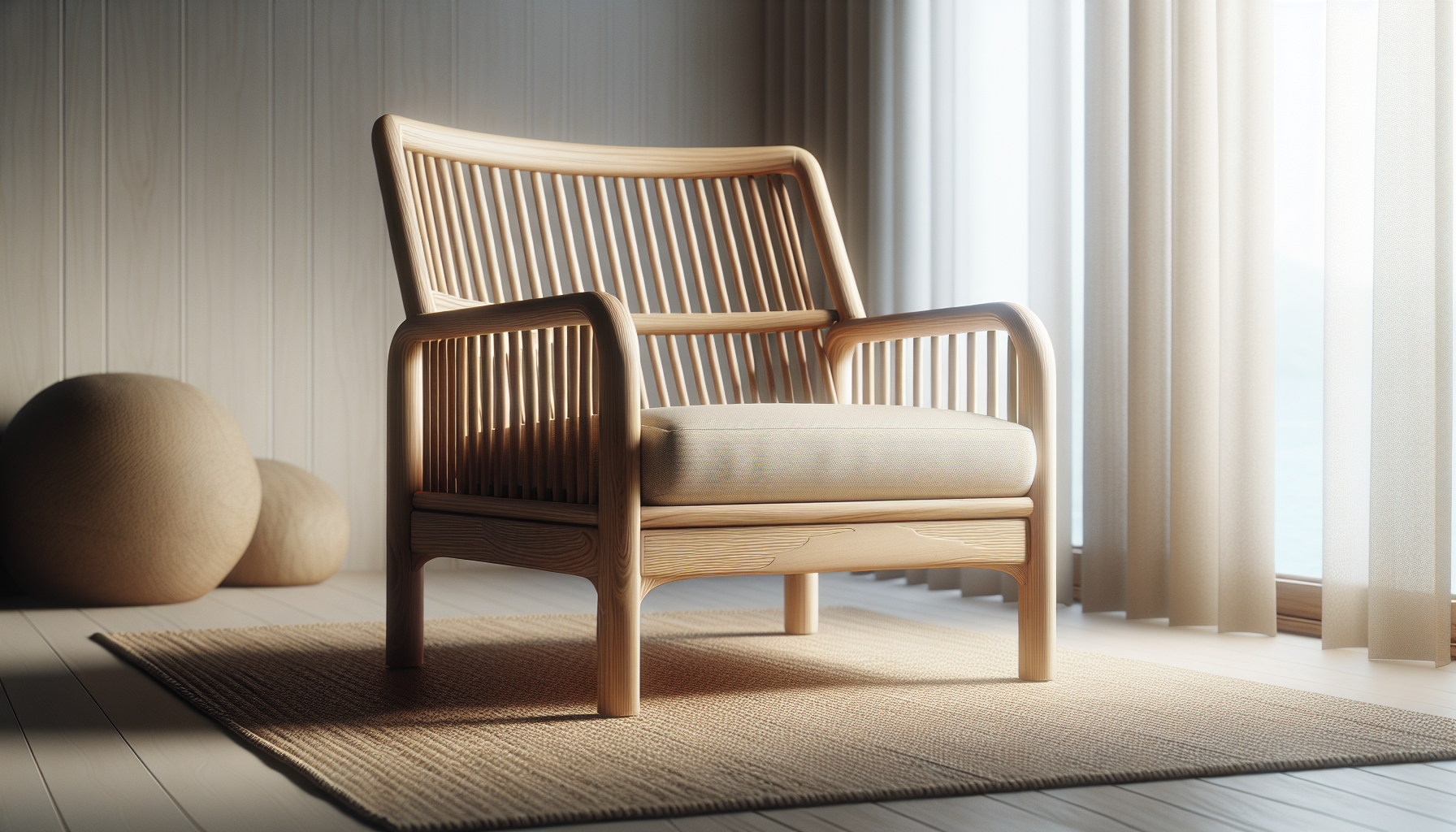What do you envision when you think about your living space? The balance of style and comfort can be challenging to achieve, especially with various design trends available. One such trend that beautifully bridges modern aesthetics with traditional warmth is Japandi design. If you’re curious about the ideal proportions for Japandi furniture, you’re in the right place!
Understanding Japandi Design
Japandi is a design style that merges Japanese minimalism with Scandinavian functionality. It emphasizes simplicity, natural materials, and a neutral color palette. This combination not only makes your space more aesthetically pleasing but also fosters a sense of tranquility and balance in your home.
The Essence of Japandi
At its heart, Japandi focuses on the “less is more” philosophy. You may want to consider how every piece of furniture contributes to the overall atmosphere of your home. Each item should serve a purpose while also adding to the beauty of the environment.
Key Characteristics of Japandi Furniture
Understanding the foundational characteristics of Japandi furniture will help you appreciate its proportions better. This style incorporates clean lines, organic forms, and functional pieces with minimal ornamentation.
Natural Materials
Wood, bamboo, and cotton are common materials used in Japandi furniture, creating warmth and inviting textures. They also add a natural aesthetic that’s crucial for achieving harmony in your space.
Color Palette
Stick to a muted color palette with shades like beige, gray, soft greens, and warm browns. These colors not only contribute to a calming environment but also ensure that the furniture blends seamlessly into the room.
Multi-Functional Pieces
One of the key aspects is to choose furniture that serves multiple purposes. For instance, a coffee table can double as a storage unit, or a sofa can convert into a bed.
Ideal Proportions of Japandi Furniture
Now that you have a foundational understanding of Japandi design, let’s break down the ideal proportions for Japandi furniture to ensure your home feels balanced and inviting.
Sofa and Lounge Seating Dimensions
When selecting seating, you want to ensure that it feels comfortable while maintaining the elegance inherent in Japandi design.
| Type of Seating | Ideal Width | Ideal Depth | Ideal Height |
|---|---|---|---|
| Loveseat | 54-64 inches | 30-38 inches | 28-36 inches |
| Sofa | 72-96 inches | 30-38 inches | 28-36 inches |
| Armchair | 28-36 inches | 30-36 inches | 28-36 inches |
The dimensions of your sofa or lounge seating will dictate how guests can move around the space. Ensure that the seating doesn’t overshadow other elements in the room.
Coffee Table Proportions
Coffee tables are often the centerpiece of the living area, so getting the proportions right is essential.
| Type of Table | Ideal Length | Ideal Width | Ideal Height |
|---|---|---|---|
| Coffee Table | 48-60 inches | 24-30 inches | 16-18 inches |
Your coffee table should ideally be two-thirds the length of your sofa to create a balanced look. Also, ensure it is about 12-18 inches from the seating, allowing for easy movement.
Dining Table Dimensions
Dining tables should combine comfort with function, especially when hosting gatherings.
| Type of Table | Ideal Length | Ideal Width | Ideal Height |
|---|---|---|---|
| Rectangular Table | 60-96 inches | 30-48 inches | 28-30 inches |
| Round Table | 48-60 inches | N/A | 28-30 inches |
A rectangular table should allow for at least 24 inches of space per person for dining. The height typically matches that of the chairs to lend a comfortable dining experience.
Bed and Bedroom Furniture Measurements
Creating a restful bedroom space is crucial in achieving a serene atmosphere.
| Furniture Type | Standard Size | Ideal Height |
|---|---|---|
| Queen Bed | 60 x 80 inches | 24-30 inches |
| King Bed | 76 x 80 inches | 24-30 inches |
| Nightstand | 20-30 inches | 24-28 inches |
Nightstands should be roughly the height of your bed’s mattress to allow for easy access to items like lamps and books.
Storage Solutions
Finding the right storage solutions can keep your space organized while contributing to the interior’s harmony.
| Storage Type | Ideal Width | Ideal Depth | Ideal Height |
|---|---|---|---|
| Storage Cabinet | 30-72 inches | 18-24 inches | 30-72 inches |
| Bookcase | 30-36 inches | 12-18 inches | 48-72 inches |
Having ample storage keeps your decor clutter-free, which is paramount in Japandi design. Opt for furniture that provides storage without detracting from the space’s overall look.
The Importance of Proportion in Design
Have you noticed how the proportions of your furniture can impact the entire room’s feel? Properly proportioned furniture creates visual balance and unity, ensuring that each piece complements the others. In Japandi design, achieving harmony between the sizes of your furniture helps maintain a serene atmosphere, essential for relaxation.
Creating a Cohesive Look
Once you’ve determined the ideal proportions for your furniture, think about how the different pieces work together within the space. Striving for cohesion in materials, colors, and shapes allows for seamless integration.
Material Consistency
Using similar materials throughout your furniture will enhance a consistent look and feel. For instance, if you choose a wooden coffee table, try to select shelving or side tables in the same finish.
Color Harmony
Stick to a color palette that reflects tranquility. By choosing colors that complement each other, you make it easier for your furniture to harmonize with the overall decor.
Shape and Size Coordination
Ensure that furniture pieces relate well in terms of shape and size. For example, if you have sleek, low-profile seating, opt for a table that is at a similar height and broad shape, enhancing visual flow.
Integrating Japandi Furniture Into Your Space
What if your existing furniture doesn’t align with Japandi dimensions? You can still integrate the aesthetic without starting from scratch!
Mixing and Matching Styles
You might find that your unique taste can blend well with Japandi elements. Look for pieces that reflect clean lines and natural finishes. A Scandinavian side table or a Japanese-inspired lamp can easily complement your existing décor.
Reimagining Spaces
You can also consider how to repurpose areas of your home to reflect Japandi design. Rearranging furniture to promote openness and letting in natural light can enhance the overall ambiance.
Layering Textures
Incorporate textiles like cozy blankets or soft rugs that evoke warmth and comfort. Fabrics with natural fibers and tactile qualities can create an inviting atmosphere, resonating well with the Japandi aesthetic.
Final Thoughts
Finding the ideal proportions for Japandi furniture isn’t just about numbers; it’s about creating a space where you feel at peace. By understanding the dimensions that work best for various types of furniture, you can enhance the livability of your home while maintaining the essence of Japandi design.
Embracing Balance in Your Space
Striking the right balance between form and function can transform your home into a serene retreat. Embrace natural materials, mindful color choices, and the art of proportion to develop a living space that reflects your taste and nurtures your well-being.
Are you ready to make adjustments that harmonize with the Japandi lifestyle? Start by identifying key pieces you wish to upgrade or integrate. It’s a rewarding journey that goes beyond mere aesthetics, creating a sanctuary where you can unwind and feel at home.

